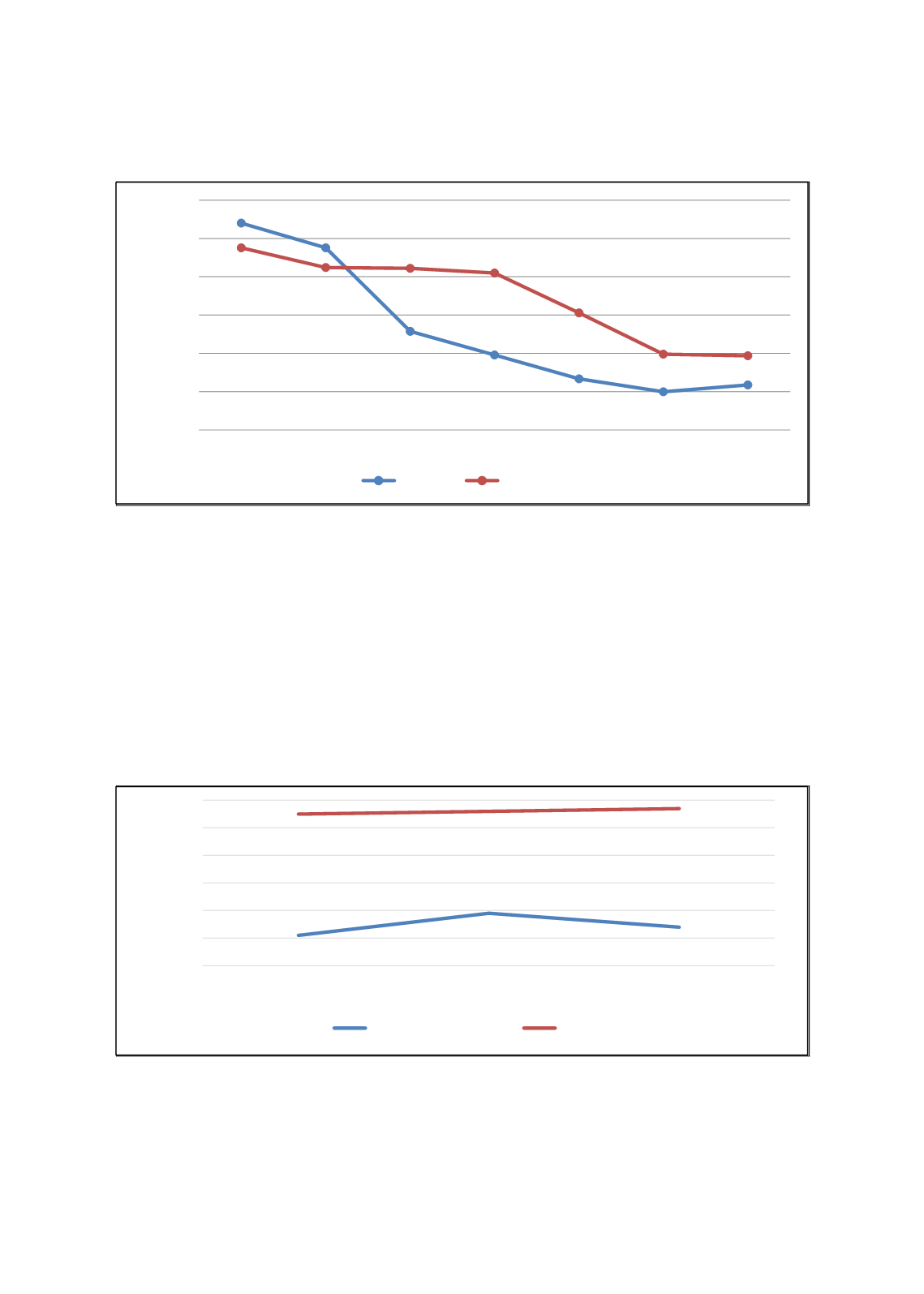

100
Figure 3.2.2: Pupil Teacher Ratio by School Type, 2010-2016
Source
: Malaysian Educational Statistics, MOE 2014; 2015; 2016
The high level of public spending helped reduce pupil-teacher ratio during 2010-2016 (
Figure
3.2.2)
. The average class size for secondary schools reduced from 33.6 in 1990 to 26.45 in the
year 2016, while student-teacher ratio for secondary schools fell from 18.9 to 11.97 (Ahmad,
2012; MOE, [Malaysian Educational Statistics], 2016). New schools and classrooms were built
under the National Development Plans during 1996-2010. Efforts have been also made to
increase teacher quality. The Ministry of Education set a target that all teachers in secondary
schools should possess a bachelor’s degree by 2010. The entry bar for teachers has been raised
to among the best 30 percent of the graduates. In terms of teacher qualifications, this led to a
noticeable increase in the number of teachers with degree (36.4 percent in 1990 to 97 percent
in 2016) (Ahmad, 2012, MOE [Malaysian Educational statistics], 2016) (
Figure 3.2.3)
.
Figure 3.2.3: Percentage of Graduate Teachers by Secondary Schools Type, 2014-2016
Source
: Malaysian Educational Statistics, MOE 2014; 2015; 2016
In contrast to the progress in school enrolment, and some improvement in teacher
qualifications, Malaysia’s record is mixed when it comes to student achievement and learning
11
11,5
12
12,5
13
13,5
14
2010
2011
2012
2013
2014
2015
2016
Pupil Teacher Ratio (%)
Primary
Secondary
40
50
60
70
80
90
100
2014
2015
2016
Graduate Teachers (%)
Primary Schools
Secondary Schools
















